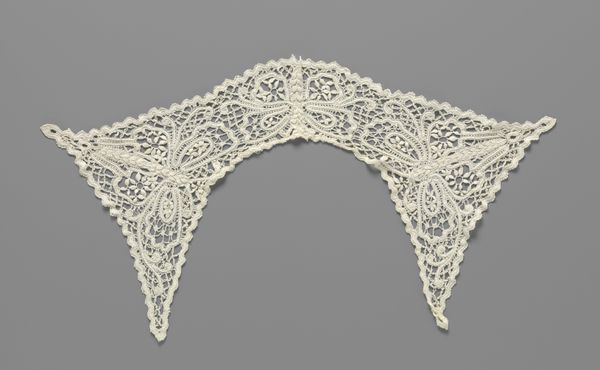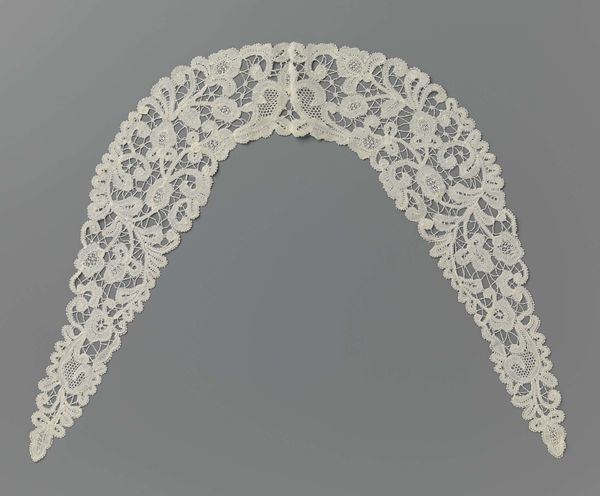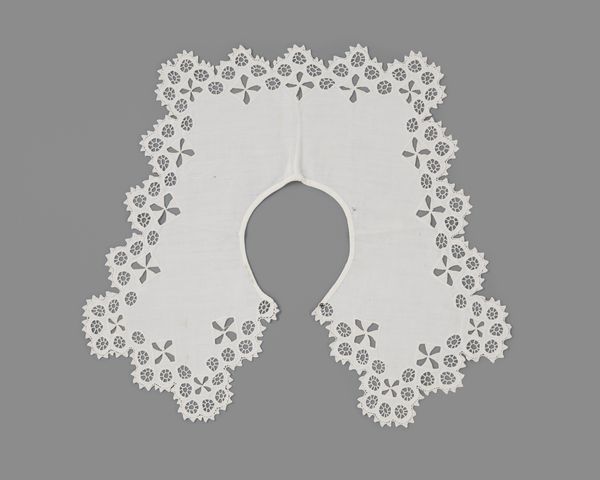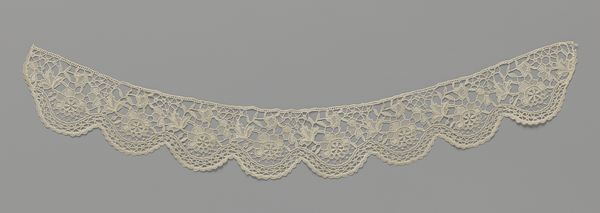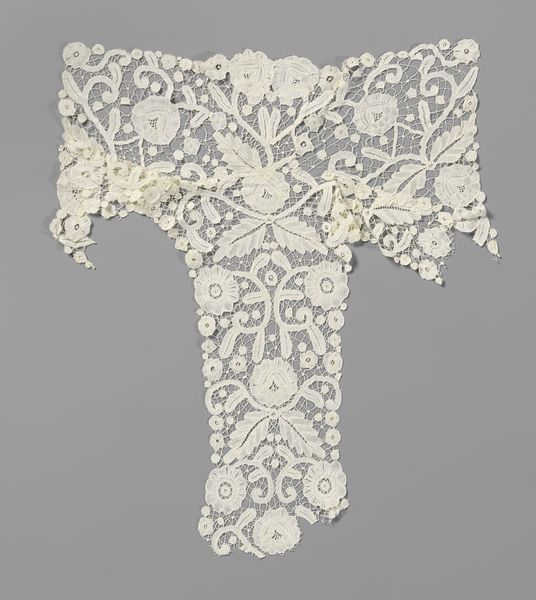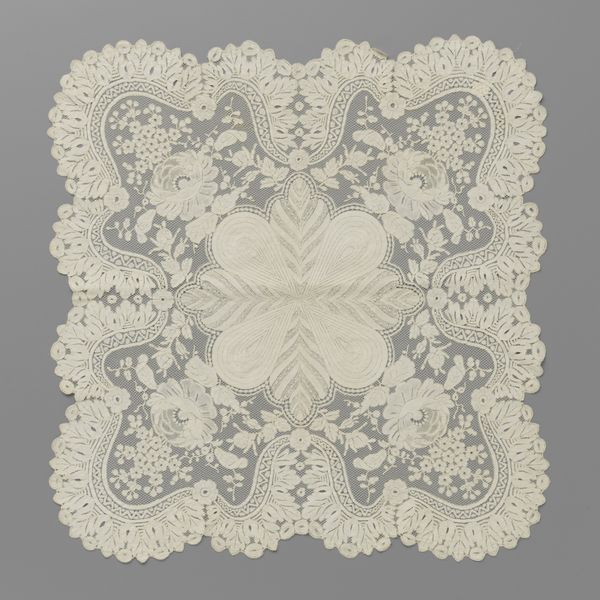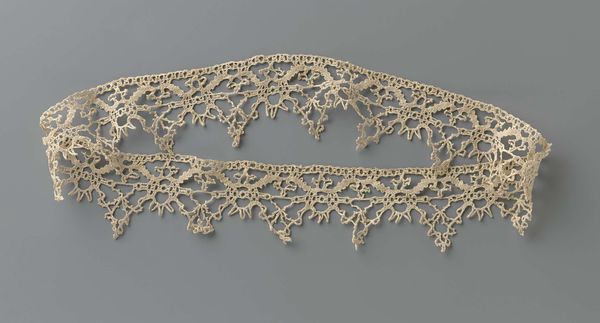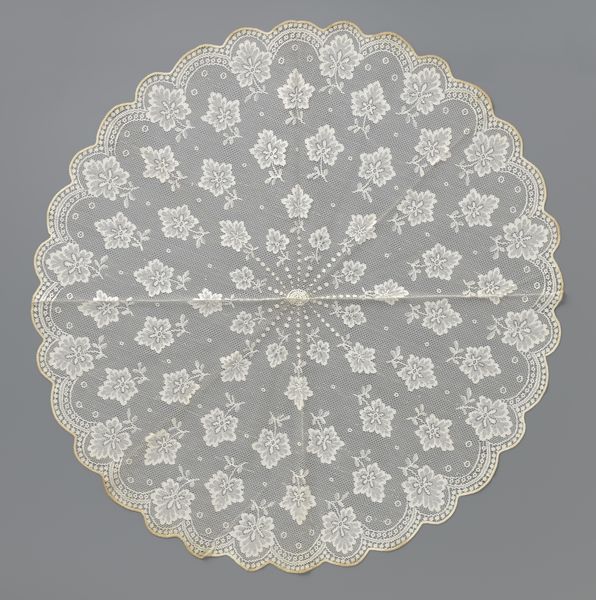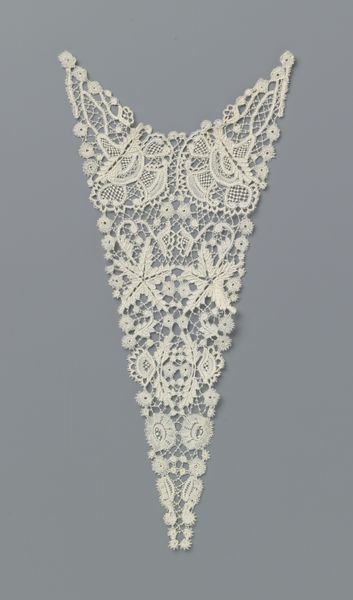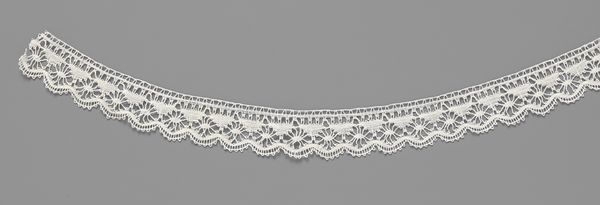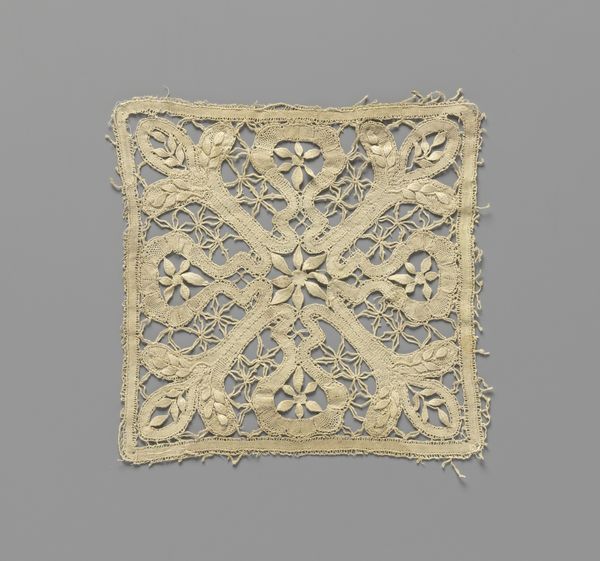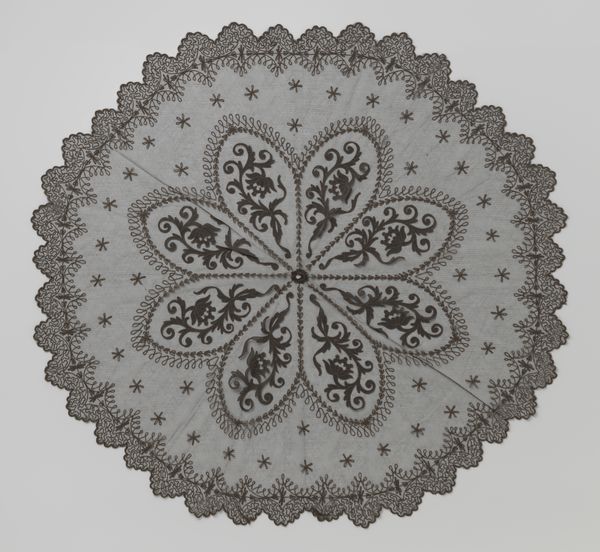
Kraag van kloskant met hart en druppelvorm tussen twee lobben gevormd door een smal doorgaand lint c. 1919
0:00
0:00
textile
#
natural stone pattern
#
textile
#
pattern background
#
pattern design
#
repetitive shape and pattern
#
fabric design
#
repetition of pattern
#
abstraction
#
regular pattern
#
pattern repetition
#
decorative-art
#
layered pattern
#
combined pattern
Dimensions: height 27.5 cm, width 35 cm, width 9.5 cm
Copyright: Rijks Museum: Open Domain
Editor: This delicate textile piece, created around 1919 by Louise Wilhelmina van der Meulen-Nulle, is a lace collar with a repeating floral pattern. It almost feels weightless and ethereal. What strikes you most about this particular artifact? Curator: What's fascinating is considering this piece within the social context of its time. Just after World War I, there was a widespread desire to return to normalcy and tradition. How might this intricate lacework, a product of significant labor, reflect the social and economic anxieties of the period, perhaps even a longing for pre-war elegance? Editor: I hadn't considered that. It definitely has an old-world charm. But how does it connect with institutions? Curator: Think about how museums shape our understanding of craftsmanship. By displaying lace like this, are we celebrating individual artistry, or are we perpetuating certain ideas about femininity and domesticity tied to specific social classes? Does exhibiting it here reinforce or challenge the historical power structures that defined who created and consumed such items? Editor: So you're saying its value isn't just aesthetic, but also lies in the story it tells about the time it was made and how it was viewed? Curator: Exactly. And even how *we* view it today, within a modern museum setting, says something about our values. Considering who had access to such finery, or who was excluded, is essential. Do you think displaying the artist’s name alongside is helping or hindering the power dynamic in some ways? Editor: It definitely highlights the individual's work rather than just the craft, so that's a step in the right direction for sure! I've certainly learned to look at decorative art differently now. Curator: Me too! It is easy to forget how historically embedded even seemingly innocuous objects can be, and how that affects modern sensibilities.
Comments
No comments
Be the first to comment and join the conversation on the ultimate creative platform.
